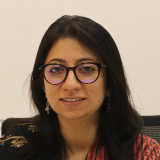Caste, Female Labor Supply, and the Gender Wage Gap in India: Boserup Revisited
The gender wage gap is notable not just for its persistence and ubiquity but also for its variation across regions and countries. A natural question is how greater workforce participation by women matters to female wages and the gender wage gap. Within India, a seeming paradox is that gender differentials in agricultural wages are the largest in southern regions of India that are otherwise favorable to women. Ester Boserup hypothesized that this is due to greater labor force participation by women in these regions.







